The Virtual World: Art and Design in Games
Uncovering the power of the designed world in digital spaces
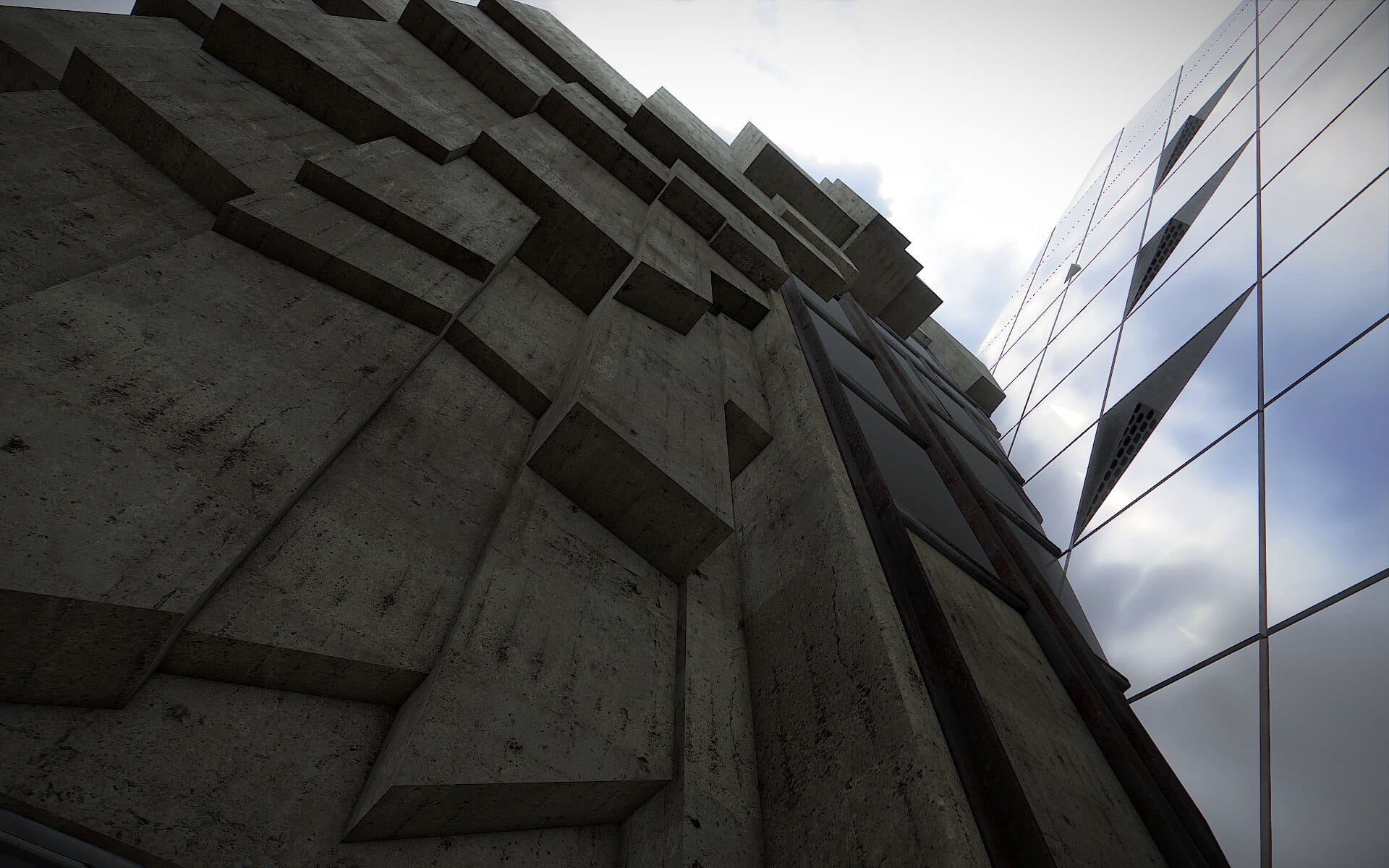
Long has the debate raged: are games art? In my humble opinion, they are, but that isn't the point of this article. While some will continue to debate whether games themselves are art, what is undeniable is that the content of games most certainly is art.
The art of visual communication
Since the early days of the games industry, developers have sought to engage in visual communication with their audience. In its most basic form, this consisted of two solid lines, a dotted line, and a small square, meant to represent a game of tennis in Atari’s Pong (1972). Today, large game studios may employ hundreds of graphic artists to create entire digital worlds. These worlds range from the sprawling realism of Grand Theft Auto, Arma 3, and Assassin's Creed to the stylised and fantastic, such as The Witcher, Skyrim, and Zelda.
Before reading on, consider for a moment how often you interact with art and design on a daily basis: how often do you look at a piece of art and consider the process behind its creation? How often do you scrutinize the design of a chair, the architectural lines of a building, or the cover of a book?
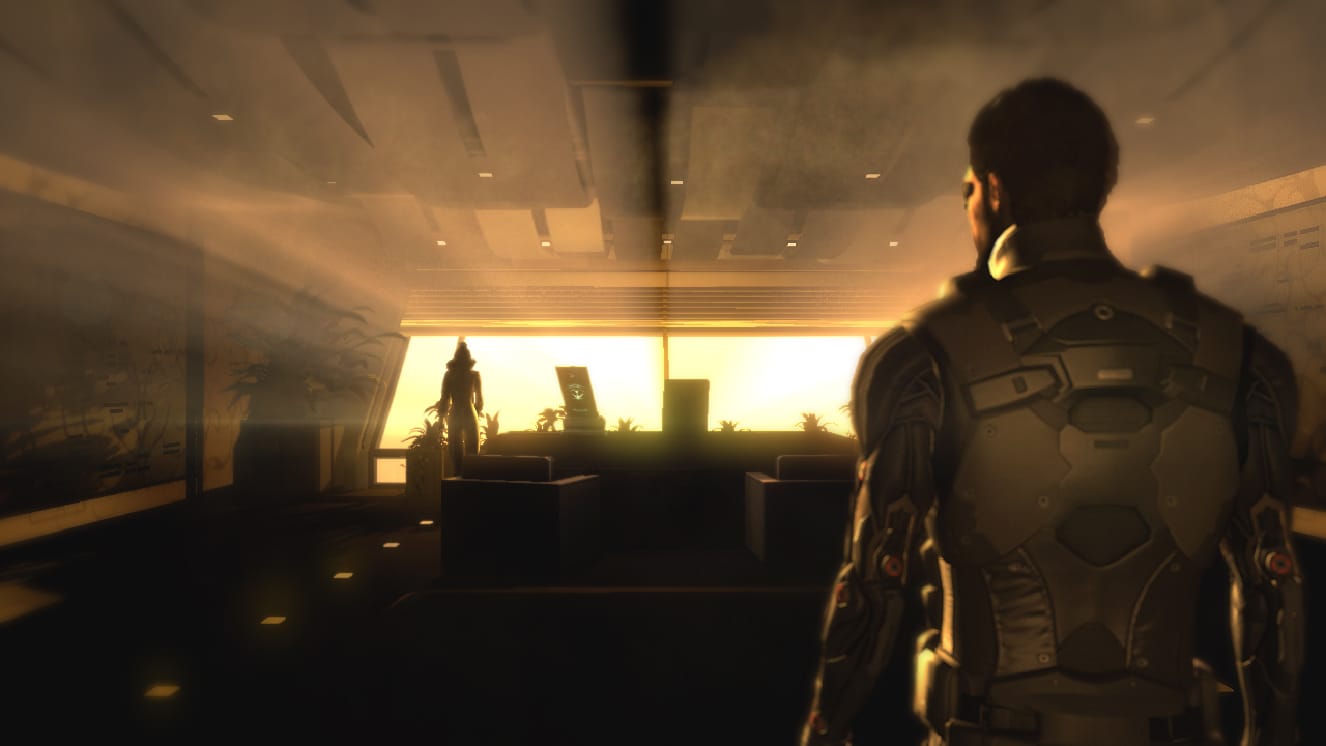
Every object, every work of art, and every structure we live in is the result of intentional design, whether it is purely functional (the shape of a toothbrush), decorative (a sculpture or painting), or some combination of the two (i.e. the architecture of Frank Lloyd Wright or the clothes of Pierre Cardin).
Whatever the intent, whether it is a functional design or a decorative work of art, the outcome is, in some part, premeditated. There is no reason to think that the creative process driving the fabrication of items in the real world is any different than the creative process behind those in the digital world. The Eames Lounge Chair was designed to be the epitome of comfortable lounge seating while evoking the aesthetic sensibilities of mid-century modernist America. Likewise, the set design in 2011's Deus Ex: Human Revolution intentionally evokes Baroque, High Renaissance style to communicate to the player that this is a world that is undergoing immense societal change much like the real world of the 16th and 17th centuries.

In fact, Deus Ex: Human Revolution and its 2016 sequel Mankind Divided are two stunning examples of this hidden, virtual art world. According to art director, Jonathan Jacques-Belletête, the two primary influences in the game were the myth of Icarus and the Renaissance Period. The myth of Icarus was intended to highlight the inherent dangers of transhumanism, while the dramatic upheaval of society through technology and enlightenment in the game drew strong parallels with the Renaissance. Jacques-Belletête highlighted these parallels throughout the game in several ways - the design of fashion, furniture, architecture, and art, and through the frequent recreations of artwork by Da Vinci, Rembrandt, and Johannes Vermeer, as well as original artworks inspired by the masters of Renaissance realism.
Art and design are iterative and evolutionary, and one might wonder whether the work of video game artists is an untapped resource for those looking to anticipate creative trends in the real world.
Art in the Renaissance period was characterized by a specific style of realism, with heavy use of a style known as chiaroscuro by the likes of Goya and Caravaggio. Chiaroscuro uses stark contrast between light and dark, with key elements of the composition highlighted by a source of light that was often out-of-frame. This impression of elements of a scene being "revealed by light" also lends itself to the themes of the Deus Ex series, where the protagonist works against nefarious organizations hiding in the shadows - the classic Illuminati conspiracy theory.

Fashion, design, and brutalism
One of Deus Ex: Human Revolution’s most striking visual elements is fashion design. Affluent and cybernetically enhanced humans walk through the neon streets of the future adorned in Jacobean ruffs, flared cuffs with lace, and exquisite velvets patterned with gold. Meanwhile, society’s downtrodden lurk in the back alleys dressed like the crowd at a punk music gig. Every single character, every single item of clothing, feels lovingly crafted and intended to communicate a message to the player, the clearest of which is the socio-economic divide.
Deus Ex: Human Revolution's neo-Baroque aesthetic was surprisingly prescient, and recent years have seen a resurgence of interest in ornate craftwork that one might associate with the Baroque period (and the Baroque Revival of the 19th and early 20th century), as opposed to the Scandinavian minimalism that has dominated the design world for so long. Art and design are iterative and evolutionary, and one might wonder whether the work of video game artists is an untapped resource for those looking to anticipate creative trends in the real world.
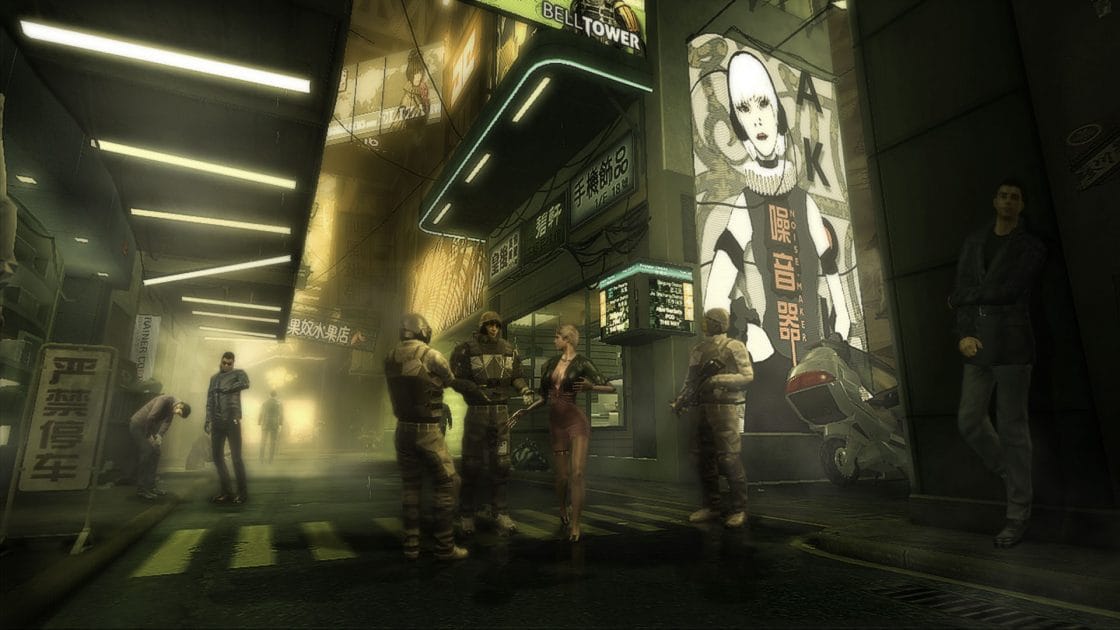
The Deus Ex series is very much a product of its time. The first game, in many ways, felt like a reaction to cultural influences of the late '90s, such as the X-Files and The Matrix. It was an era when conspiracy theories were fun before the likes of QAnon and anti-vaxxer movement revealed the more harmful consequences of entertaining organised paranoia with no evidence.
Deus Ex: Human Revolution, and its sequel Mankind Divided, were released in a climate of rising global instability, inequality, and prejudice. While Mankind Divided's approach to marketing was pretty ham-fisted and insensitive (appropriating Black Lives Matter symbology), the influences on the game world were abundantly clear, and this can be seen in the art of the games. Thus, the world of both games is littered with the sort of art that goes hand-in-hand with protest movements, and both games feature some incredible examples of graffiti, stencilling, and postering influenced by real-world urban street artists such as, most obviously, Banksy.
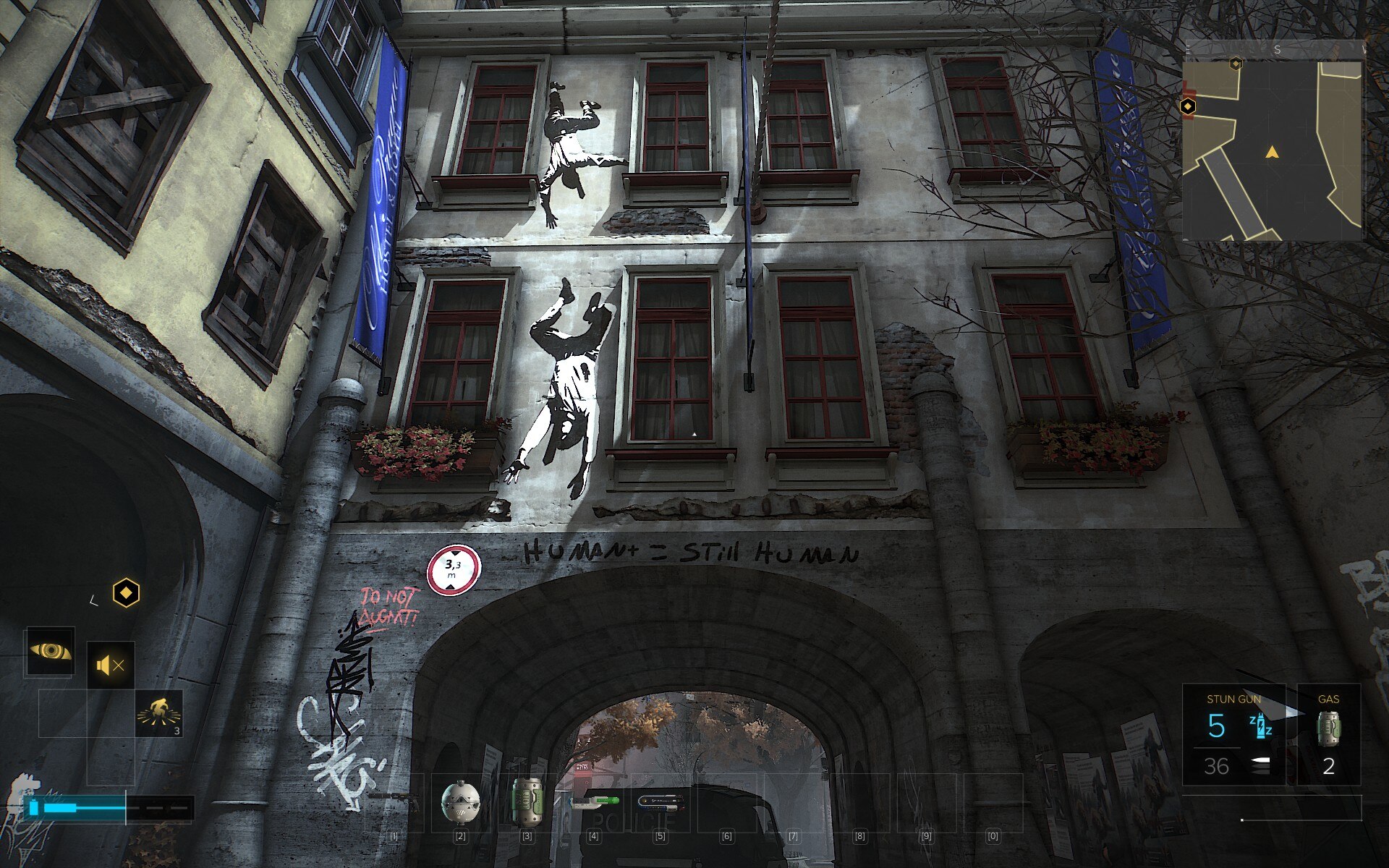
2004’s Half-Life 2 put art and design to similar use. Valve's magnum opus thrust the player into a near future, where a totalitarian regime directed by an interstellar power has subjugated the people of Earth. For the Half-Life series, a powerful opening sequence is a staple. Half-Life’s train ride prologue is a part of gaming history, and the expansion packs Half-Life: Opposing Force (Gearbox Software, 1999) and Half-Life: Blue Shift (Gearbox Software, 2001) continued this tradition. Half-Life 2’s opening sequence delivered a slight variation on the sequence – the introduction is far more interactive and somewhat shorter. The challenge for Valve in Half-Life 2 was to communicate the sweeping changes to society in the time between the first and second games, and a large part of this was achieved through visual communication.
City 17 is clearly influenced by the architecture and design of the Eastern Bloc states of the Cold War - ornate European architecture stripped of the symbols of capitalist materialism. Citizens wear the plain overalls of the proletariat, while Dr. Breen's drab suit exemplifies a member of the Politburo vainly attempting to outwardly convey austerity despite the vast societal power imbalance.
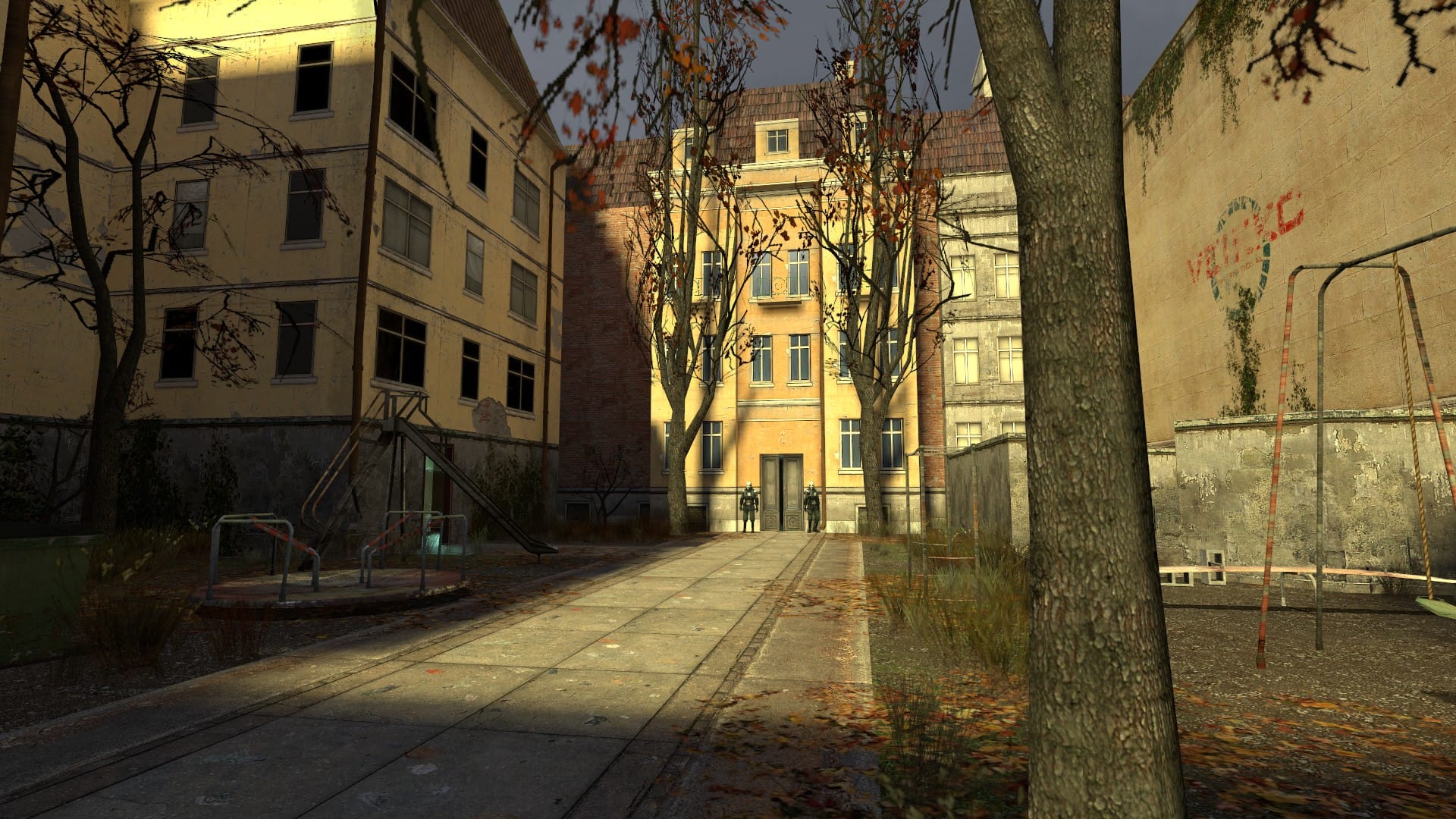
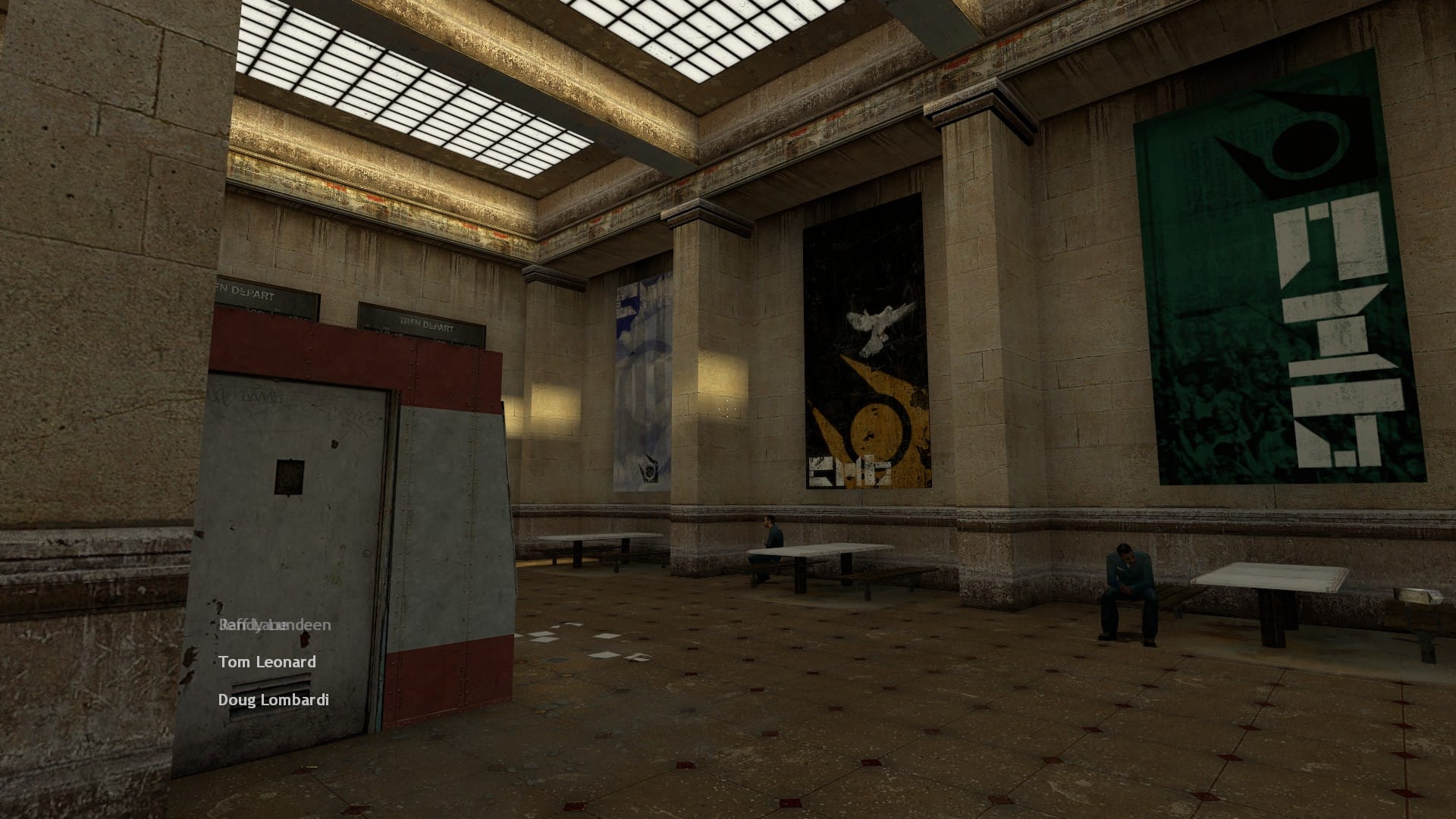
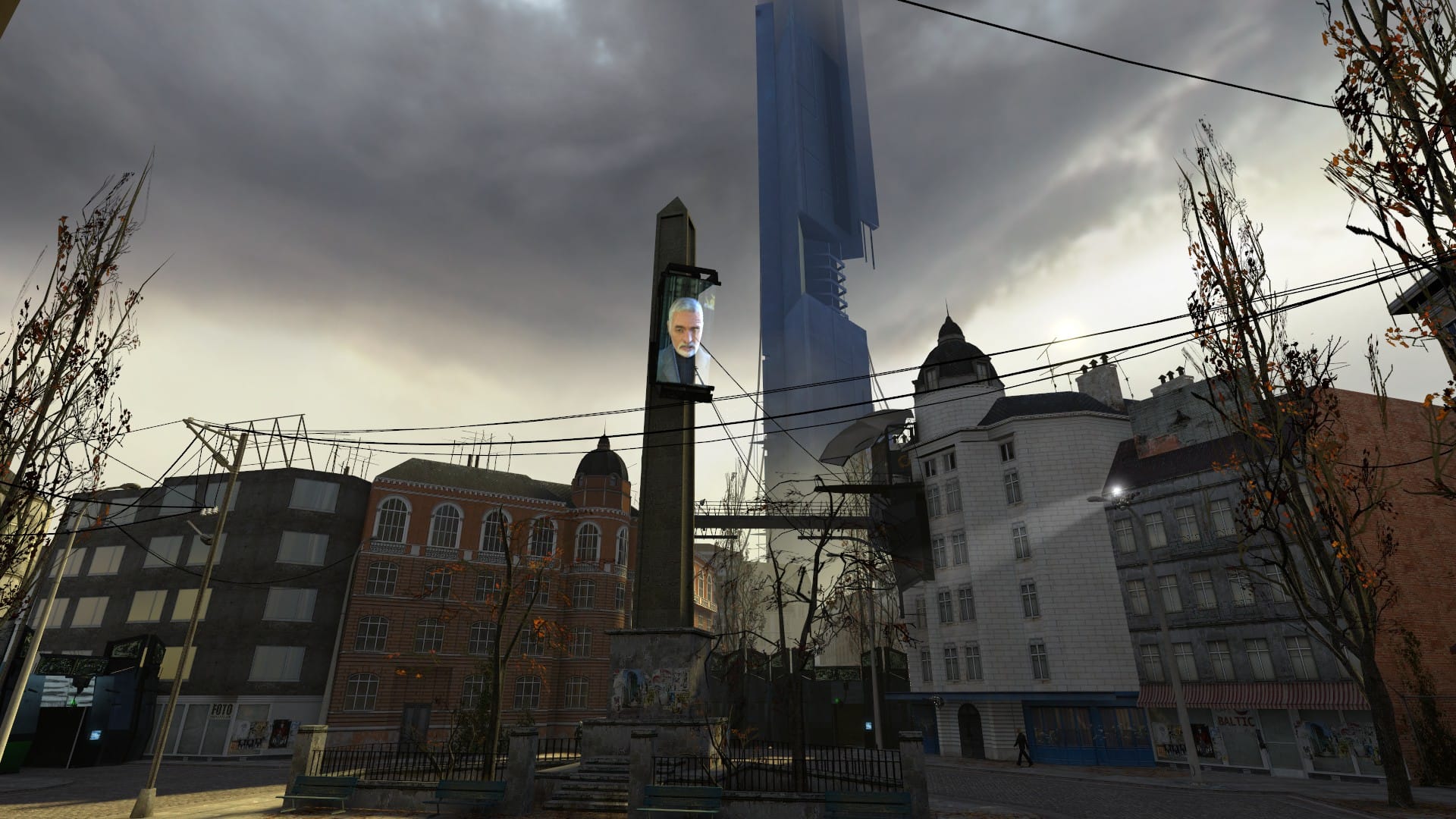
The totalitarian dystopia of City 17 in Half-Life 2. Source: Author.
Many of the structures in Half-Life 2 are stunning examples of post-war Brutalism and Structuralism, and this influence extends itself to the Combine's Citadel, with its imposing architectural lines and uniform textures echoing much of the post-War architecture of the 1950s and '60s, albeit with the more obvious science fiction embellishments one would expect in a game.

As with Deus Ex, street art is used to great effect in communicating the undercurrents of resistance in this Soviet science fiction allegory. Half-Life 2 features some very emotive work that, were City 17 a real place, could have an incredible emotional impact in the scenes it depicts.
Capturing moments in time
Video games can be a valuable cultural snapshot, and the games that are perhaps the best examples of this are the games of The Sims series. When looking back at past eras of fashion, art, and design, we are limited by the fact that the world is perpetually moving forward. Structures of the past still exist, as do the clothes, artwork, and music. But we will never get the full sense of what a bygone era was like in its totality, beyond what we see on film. In the words of Homer's The Illiad: "we will never be here again".

The Sims is one of the few examples of a complete snapshot, by nature of the game design itself. The architecture, wallpapers, clothing, product design, technology, etcetera, are all a snapshot of the era in which the game was made, and in it, we can see the Maxis game artists' interpretations of the world around them at that time. It is a cultural time capsule, the importance of which should not be overlooked in telling the story of a specific period of human history.
The cycle of creativity
The influence of the art and design world on games is clear - at times conscious, at others unconscious. Yet games are increasingly influencing the real world too. In 2021, Vogue highlighted the rise of collaborations between game and fashion designers, while Kill Screen has similarly highlighted instances where games have directly influenced designers and celebrities; fashion designer Anouk Wipprecht took inspiration from Playdead's incredible platformer Limbo, while Zayn Malik admitted in his autobiography that his 2016 Met Gala ensemble had been influenced by Mortal Kombat's Jax.
Even the tongue-in-cheek, endlessly self-referential game, The Stanley Parable, contains many fine examples of art and design. Though the game itself is a satirical commentary on the nature of video games, it contains many areas and assets infused with symbolic meaning that exhibit the sort of professional composition that the most prolific artists could only dream of achieving.
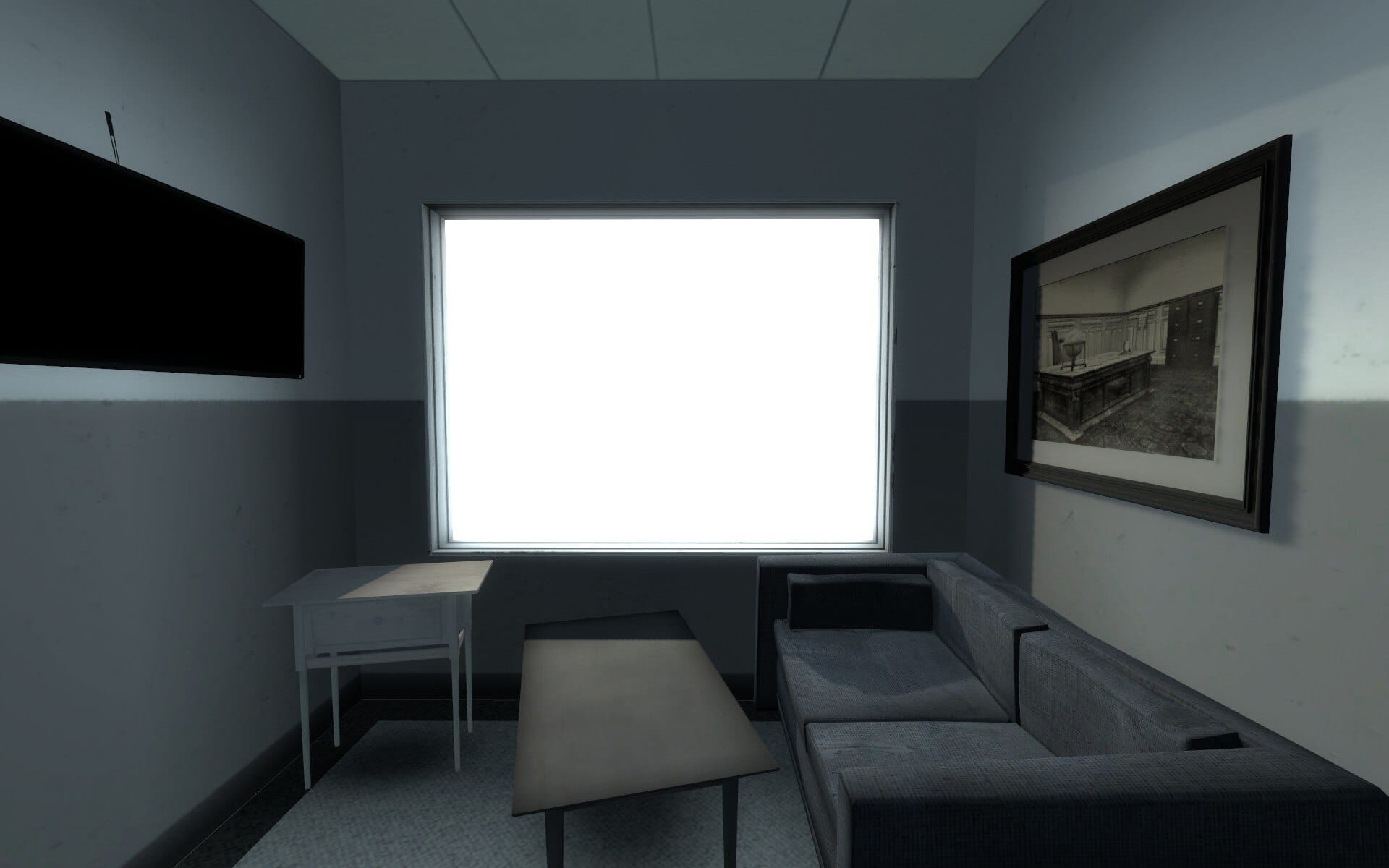
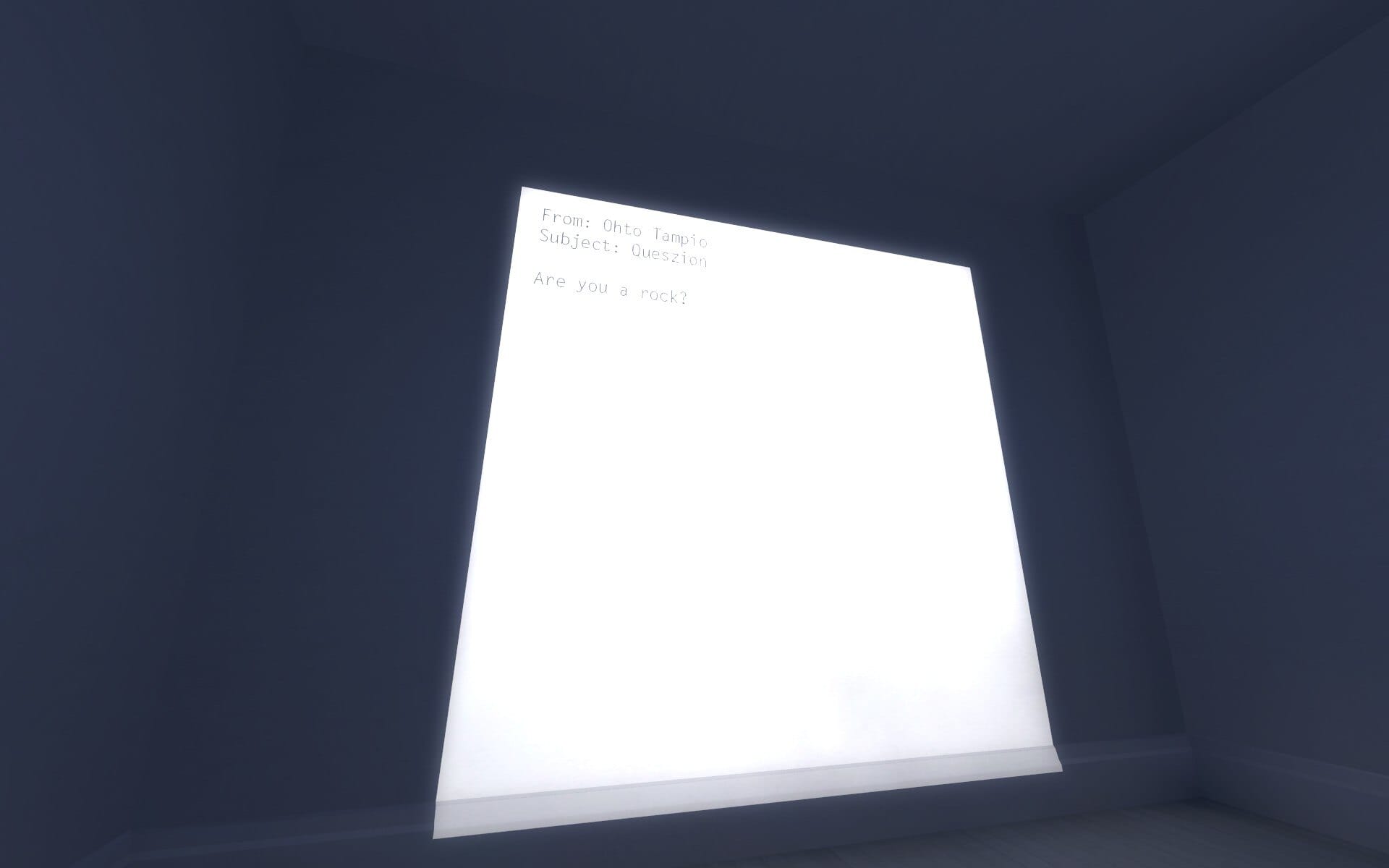
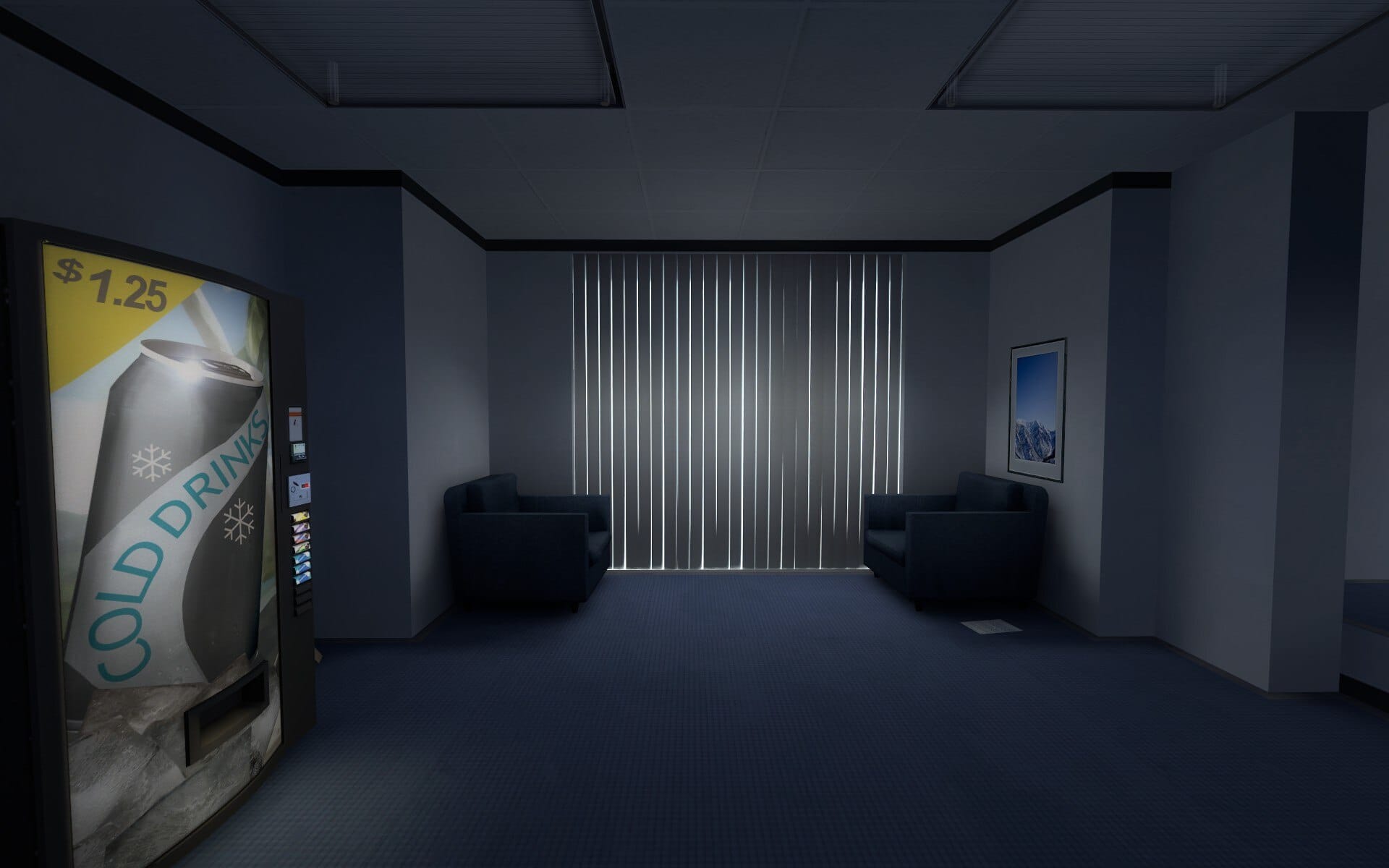
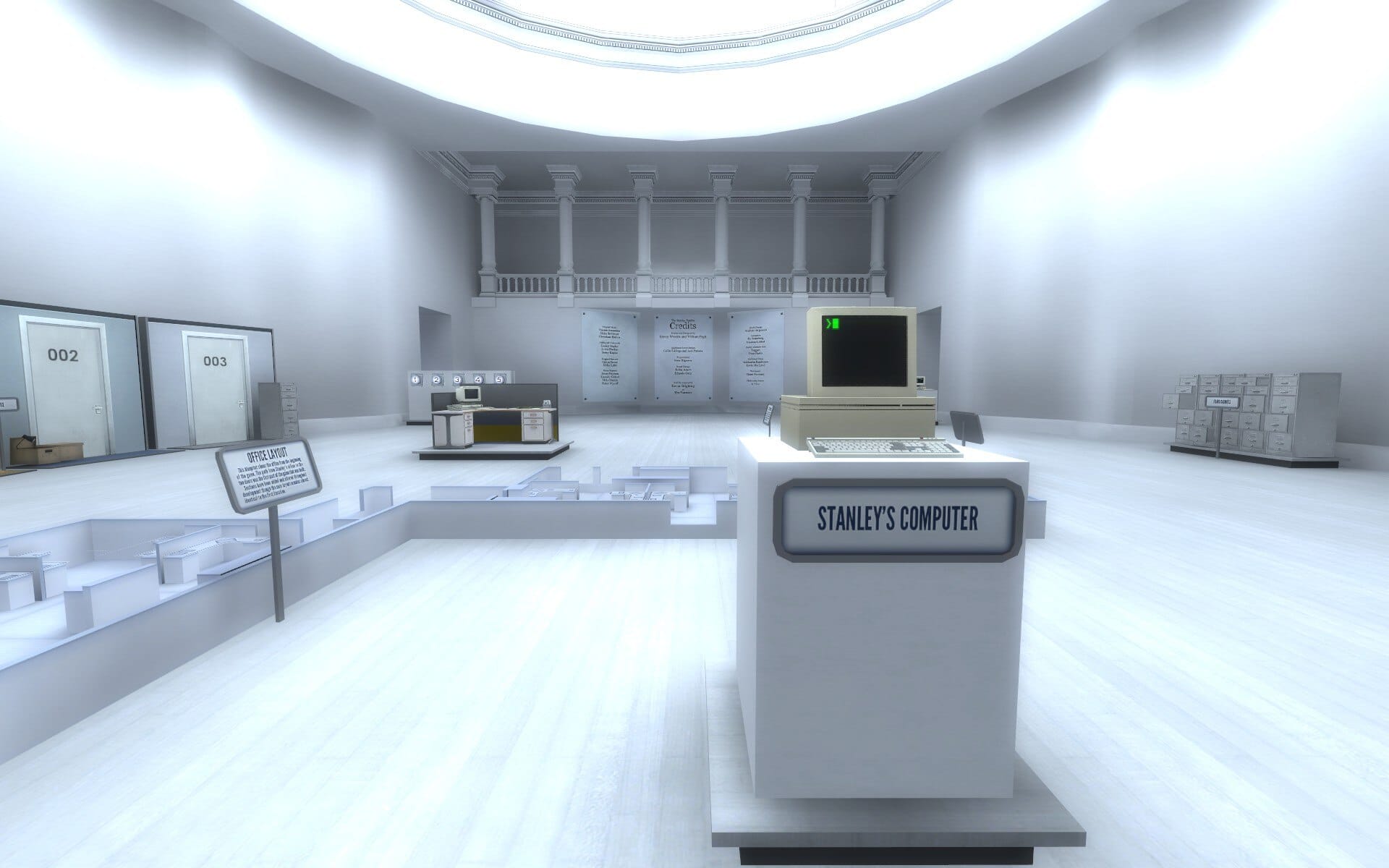
The Stanley Parable is a fine example of games as art, but the work of the developer in creating that experience shouldn't be overlooked as art itself. Source: Author.
The games industry is, in relative terms, still in its infancy; it remains to be seen how wide-ranging the influence of its creations will be on the art and design world. Already, though, the complementary influences of the real and virtual worlds upon each other can be seen. It is my sincere hope that in the coming years and decades, the incredible work of game designers and artists will gain the recognition it deserves from the wider art world.